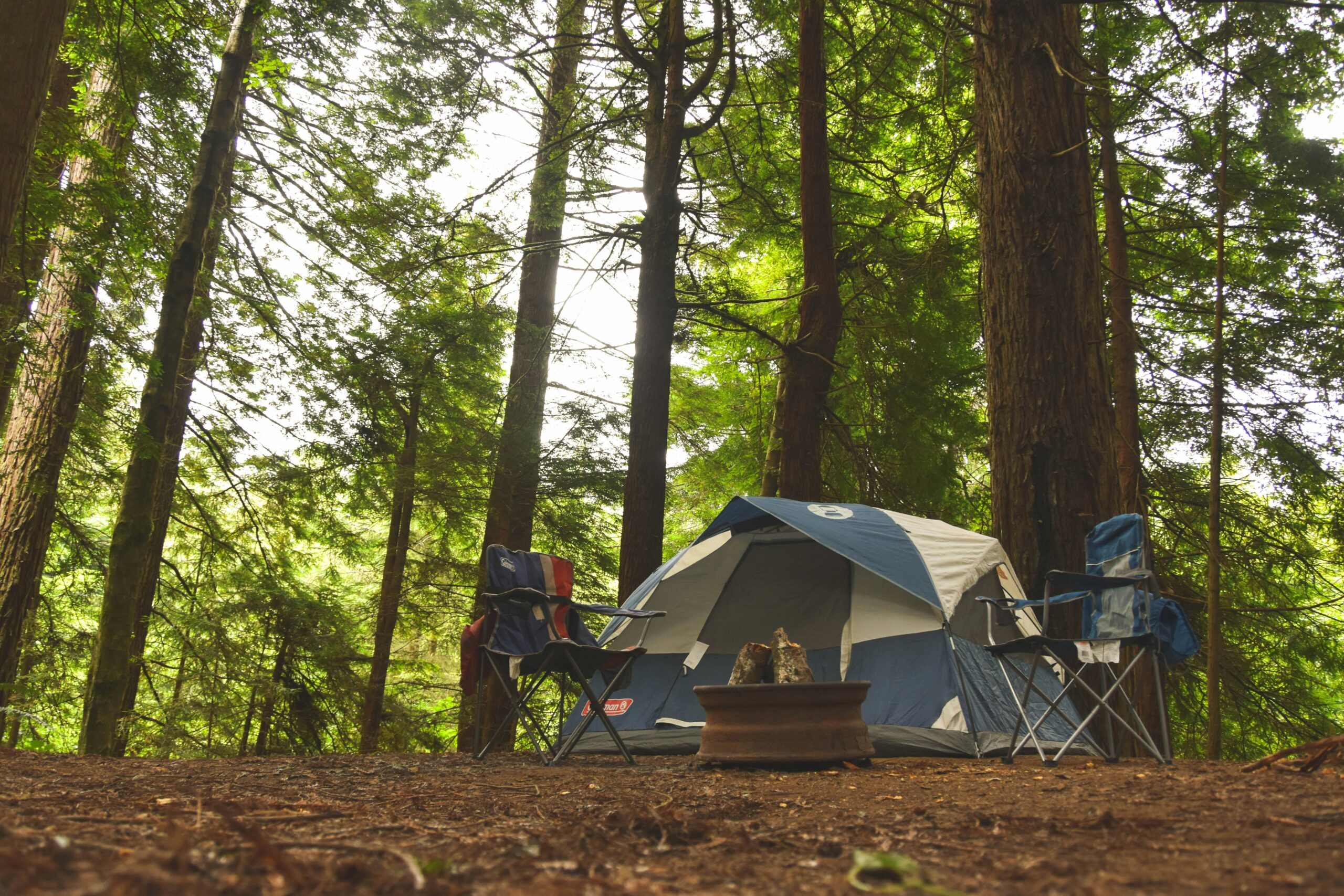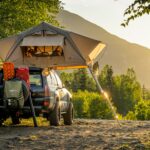
Last winter, a fellow camper’s “four-season” canopy collapsed under three inches of wet snow, and I witnessed it happen.
Last winter, a fellow camper’s “four-season” canopy collapsed under three inches of wet snow, and I witnessed it happen. Despite the manufacturer’s claims that it was winter-ready, it was clearly never tested in real-world conditions. I learned a valuable lesson from that experience: Not all camping canopies are created equal, especially when Jack Frost comes calling.
If you want to weather the elements this winter, you’re going to need more than just a simple camping canopy with a fancy name. To avoid freezing in the snow at two in the morning, you’re going to need real cold-weather protection.
Why Your Summer Canopy Won’t Cut It in Winter
Most outdoor stores won’t tell you this, but summer canopies are built to withstand completely different conditions. Your portable pop-up is great for providing shade and blocking UV rays, but when the temperature drops below freezing, it’s about as helpful as a chocolate teapot.
Summer canopies can’t handle three major obstacles that winter brings. The first problem is the weight of snow. Wet snow can be devastating, and even light, soft snow adds a lot of weight to your canopy’s ceiling. Second, the constant, bone-chilling winter winds require more durable anchoring systems. Finally, when the temperature inside and outside your shelter varies significantly, condensation becomes a major problem.
Essential Features That Actually Matter
After years of winter camping and more than a few equipment failures, I’ve figured out what separates the real winter canopies from the marketing hype.
Steep Roof Angles Are Non-Negotiable
Instead of collecting snow, your canopy should naturally shed it. Seek out designs with roof angles of 45 degrees or more. You don’t want to go outdoors at midnight shaking snow off your shelter, I promise. Anything flat turns becomes a snow collector.
Frame Strength That Goes Beyond Specifications
Manufacturers enjoy boasting about impressive-sounding numbers, but what matters is actual performance. Steel or aluminum frames with additional support at stress points are used in high-quality winter canopies. The joints ought to be strong enough that moderate hand pressure cannot bend them.
Proper Ventilation Without Heat Loss
It may seem counterintuitive, but winter canopies need ventilation to prevent dangerous condensation from building up. The best designs include adjustable vents that can be closed in storms but can be opened slightly to allow airflow. Without proper ventilation, you could wake up to the sound of icy condensation raining down on you.
Anchoring Systems That Actually Work
On frozen ground, regular tent stakes are useless. Winter canopies should include special anchoring hardware such as ice screws, deadman anchors, or snow stakes. If your canopy only has simple aluminum posts, you will need to purchase the appropriate winter anchors separately.
Coleman
Sets up in under 5 minutes thanks to pre-attached poles
- Ease of setup
- Roomy
- Good Quality
UNP Tents
5 Minutes Set-Up for 2 People: No particular skills are needed
- Plenty of room
- Easy to set up
- Good Quality
My Top Picks for Winter 2025
Over the last five years, dozens of winter canopies have been tested, and these three always work well in bad weather.
Coleman Arctic Blast 12×12 – Best Overall Value
Even after three seasons of use, this canopy has never let me down. The steep roof design sheds snow effectively, and the reinforced frame can withstand up to 40 pounds of snow per square foot. Even in cold weather, it only takes 20 minutes to set up, and the included guy-line system provides excellent stability.
My favorite feature is the integrated ventilation system. At the top, there are two movable vents that let moisture out without creating drafts. I’ve weathered some pretty strong storms under this thing, and the fabric is very waterproof.
What’s the downside? It’s not a backpacking option, weighing in at 28 pounds. However, it’s completely indestructible for base camp or vehicle camping situations.
Eureka Northern Breeze Shelter – Best for Harsh Conditions
This is my go-to shelter when I’m venturing into the most challenging conditions. The geodesic frame design is extremely wind-resistant, and the double-wall construction offers excellent insulation. This canopy easily withstood winds of over forty miles per hour.
Compared to simpler systems, setup requires more work, but performance requires additional sophistication. Multiple guy-out points offer rock-solid stability, and the dead air space created by the inner and outer walls greatly reduces heat loss.
REI Co-op Trailmade Canopy – Best for Solo Campers
Different priorities apply while camping alone in the winter, and this small canopy meets those needs. It weighs only 8 pounds, making it both lightweight enough for hiking and sturdy enough for cold weather. When you’re dealing with cold fingers and dwindling daylight, the single-pole design makes assembly easier.
Interior space is sacrificed; this is obviously a one-person shelter. However, it’s difficult to find a better option for lone travelers who require dependable winter protection without the bulk.
Setup Secrets That Make All the Difference
If you don’t set up your winter canopy correctly, it won’t work at all. These are the methods that distinguish successful winter campers from those who spend their nights in shelters that have collapsed.
Site Selection Matters More Than You Think
Look for natural wind shelter rather than just level land. The best location is one that permits drainage but is protected from the predominant winds. I always stay away from ridgetops where wind exposure is greatest and valley bottoms where chilly air accumulates.
The Snow Platform Technique
It may seem counter-intuitive, but you don’t want to clear your setup area of all the snow. Insulation from the freezing ground below is really provided by a compacted snow platform. To make a solid, insulating base, clear the space and then pack down any snow that remains.
Guy-Line Angles Are Critical
Your guy lines should form a 45-degree angle between the anchor points and the canopy. This provides optimal stability while still allowing significant leeway for gusts of wind. Since tripping over a guy line in the dark can quickly bring your entire shelter down, I use glow-in-the-dark guy line cord to help you see the lines at night.
Common Winter Canopy Mistakes to Avoid
I think the biggest mistake is treating winter canopies like summer gear. Just throwing stuff out there and expecting them to work is not an option. Winter camping requires more preparation, better equipment, and constant awareness of the conditions.
Another common mistake is inadequate anchoring. Everything should be overbuilt in the winter. Always have backup anchoring options on hand, and use more stakes than you think you will need. Too many canopies have become expensive kites because campers have neglected to anchor them properly.
Maintenance Tips That Extend Canopy Life
Maintaining equipment properly is crucial because winter temperatures are harsh on it. Before storing your canopy, make sure it is totally dry, even if that means putting it up in your garage. Reapply waterproofing solutions once a year and inspect all seams and stress spots on a regular basis.
The off-season is the time to keep your canopy loosely packed. Compression storage can lessen the efficiency of insulation and harm waterproof coatings.
Making Your Investment Count
While a high-quality winter canopy can be expensive, it’s an investment in comfort and safety. Having reliable equipment can mean the difference between a wonderful experience and a survival situation when facing harsh weather. Consider not only the cost but also your unique needs when making your decision. For group car camping, a lightweight backpacking canopy is not enough, while for solo excursions, a heavy-duty base camp shelter is overkill.
The Bottom Line
Winter camping doesn’t mean struggling through miserable conditions. With the right canopy and the right set-up techniques, you can stay comfortable and safe even when the weather is bad. The key is to choose gear that is truly designed for winter conditions, not just marketing claims.
Remember, your canopy is your primary protection from the elements. Don’t compromise on quality when your comfort and safety depends on it. Winter weather doesn’t give inadequate gear a second chance.
Whether you’re planning a weekend car camping trip or a serious backcountry expedition, these canopies will protect you while nature shows its teeth. Choose wisely, properly equipped and enjoy the unique beauty that only winter camping can provide.






